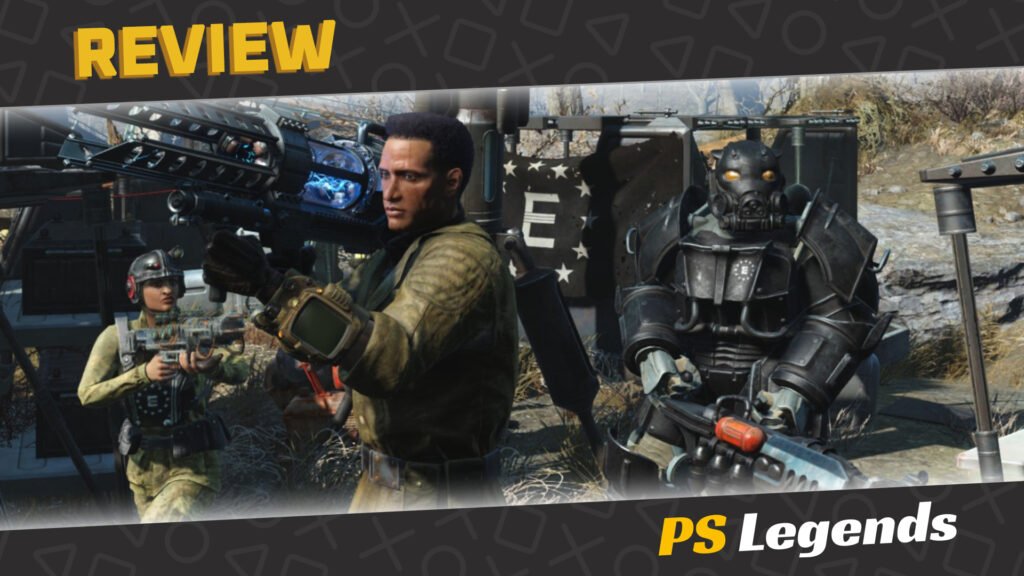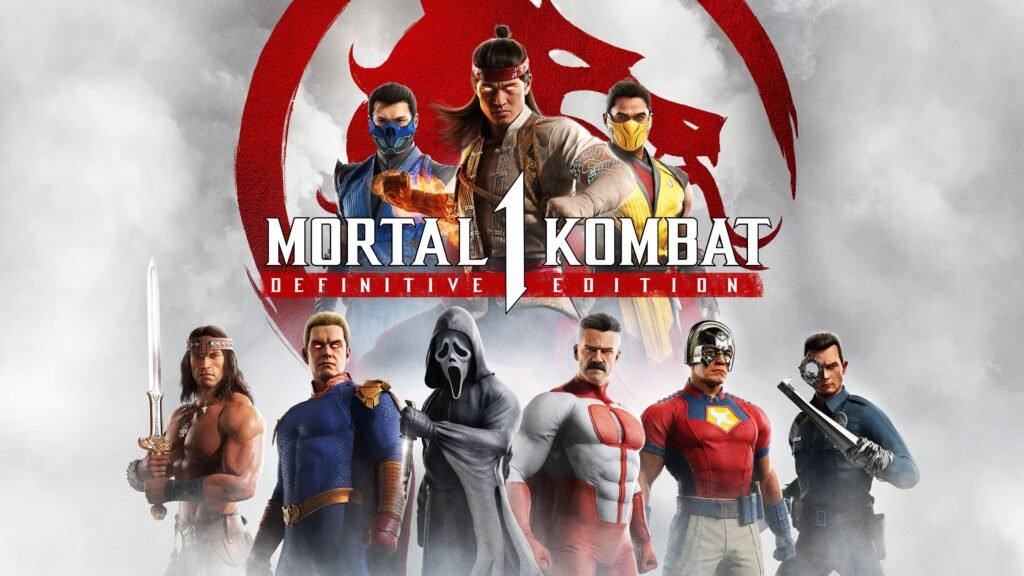Well, well, well. The prodigal son returns. I think most of us were assuming PlayStation had seen the last of Bethesda games ever since Microsoft acquired the parent company ZeniMax Media back in March 2021. Maybe there’s hope for The Elder Scrolls VI yet, but that’ll be years away even if by some miracle we do get lucky. For now, let’s reacquaint ourselves with Fallout 4.
Yes, we’ve reviewed Fallout 4 before. Our Matt did us proud, so do give his write-up a look. It gives us a deep dive into Fallout 4’s various factions and the paid DLC, too. To avoid retreading old ground, this time, we’ll be seeing how well the game holds up today, now running on PS5, with its added bells and whistles. We’ll also be stepping away from the factions and DLC and focusing on the new content, refinements, and the reasons to return to the wasteland all over again.
On This Page
Introduction
After Fallout 4’s original 2015 release, Bethesda released several patches to address some of the issues that were present at the game’s launch, along with features that improve general gameplay. These regular patches would fine-tune the game by improving the graphics, frame-rate and by fixing bugs and errors present at launch. New features would also be added, such as an added status menu for settlements, and allowing the integration of Creation Kit add-ons and downloadable content.
A performance update for the PlayStation 4 version, allowing higher frame-rates and 4K resolution support when played on PlayStation 5, was announced in December 2022. It was planned for release in 2023 but was delayed, and Bethesda later announced that the update was reworked into native versions for these platforms. The update was released on April 25th, 2024, alongside stability improvements and fixes for existing platforms and a selection of free Creation Club content. Those playing the game through PlayStation Plus Extra were initially unable to update their version of the game, though this was promptly fixed. Make sure you grab it while you can.
But what’s new content-wise? As part of the Creation Club updates, there are new questlines that unlock new gear. New weapons, Power Armor, and clothing options are included in this package. There’s also the new Makeshift Weapons Pack unlocked through the quest ‘When Pigs Fly’, the Halloween Workshop which adds new settlement options through the ‘All Hallow’s Eve’ quest, and various new weapons, including the return of the popular Tesla Cannon.

Story
Fallout 4 takes place in the year 2287, 10 years after the events of Fallout 3 and 210 years after the ‘Great War’ between the United States and China over natural resources that ended in a nuclear holocaust in 2077. The setting is post-apocalyptic, covering a region of Massachusetts which includes Boston and other parts of New England known as ‘The Commonwealth’. Unlike the previous titles, Fallout 4’s story begins on the day the bombs dropped: October 23, 2077.
In the Commonwealth during the year 2077, a former military family consisting of husband Nate, wife Nora and their baby son Shaun, are approached by a Vault-Tec employee and granted free access to a state of the art underground ‘vault’ in preparation for the escalating nuclear war between the US and China. This proves to be convenient timing as bombs begin detonating across the US and a state of emergency is declared. The family successfully escape into Vault 111, however once inside, they are tricked into entering cryogenic tubes and frozen alive.
150 years later, the protagonist’s spouse (Nate or Nora based on your preference) is killed and Shaun is taken away by a mysterious group. The life support system malfunctions at a later date and unfreezes the protagonist, who leaves their tube to find Vault 111 empty, gaining the nickname of the ‘Sole Survivor’. They return home and reunite with their former robot butler, Codsworth, who reveals that a total of 210 years have passed since the nuclear attack. At Codsworth’s suggestion, the Sole Survivor heads to the nearby town of Concord, befriending a dog named Dogmeat and a member of a revived version of the ‘Minutemen’ named Preston Garvey.
There are four main factions that the player can choose to support throughout the story; the Minutemen, a faction that aims to restore order through police-like law-enforcement to drive out raiders and other threats out of the Commonwealth; the Institute, a secretive organisation that specialises in the creation of synthetic humans, or “synths” for short; the Brotherhood of Steel, an anti-synth faction hoping to preserve and control technology across the USA; and the Railroad, another secretive organisation dedicated to rescuing synths from the Institute.
Brand new to this edition via the Creation Club content, ‘Echoes of the Past’ is a new storyline featuring the Enclave, a villainous faction returning from Fallout 3 and sworn enemy of the Brotherhood of Steel, now trying to establish a presence in the Commonwealth. There’s no rest for the Sole Survivor. Time to dust-off your best laser rifle.

Gameplay
The player has the ability to freely roam in the game’s world and engage in conversation with friendly NPCs at any time. The camera can switch between a first-person and third-person perspective to suit your preference. If the player has discovered a certain location before, they may ‘fast travel’ to it, unless playing on Survival Difficulty in which fast travelling is disabled. Weapons can be customised; the game includes over fifty different types of guns, which can also be crafted with a variety of modifications to improve aspects of performance, with over 700 ‘mods’ available.
Power Armor has been redesigned to be more like a vehicle than a suit of armour, requiring fusion cores to power it and essentially being dead weight without. It can be modified, allowing the player to add items such as a jetpack or selecting separate types of armour-plating to each part of the suit. Power Armor is especially useful in reducing exposure to radiation when exploring highly irradiated environments.
A newer feature to the series is the ability to craft and deconstruct settlements and buildings. The player can select and break down many in-game objects and structures, and use the resultant raw materials to freely build their own structures. In addition, the towns can be powered with working electricity using a power line system. Merchants and non-player characters can inhabit the player’s settlements, for which the player must provide sustenance by growing food in makeshift patches and building water pumps. The player can build various defenses around their settlements, such as turrets, traps and bombs, to defend against random attacks.

When using V.A.T.S., real-time action is slowed down, and players can see the probability of hitting each body part of the enemies through a percentage ratio and action is played out from varying cinematic camera angles. The Pip-Boy, a personal computing device strapped to the player character’s wrist, allows the player to access a menu with statistics, maps, data, and items the player has acquired. The player can find game cartridges, called Holotapes, which can be played on the Pip-Boy or a terminal.
Actions in V.A.T.S. cost points, limiting the actions of each combatant during a period of time, and the player can target specific body parts for attacks to inflict specific injuries; head-shots can be used for quick kills or to blind opponents, legs can be targeted to slow enemy movement, and opponents can be disarmed by shooting at their weapons. Unlike previous games, in which the player had a random chance to inflict a critical hit, they are now performed manually through V.A.T.S.
At the beginning of the game, players are given points to spend on a character progression system called S.P.E.C.I.A.L. The system represents seven statistics, namely strength, perception, endurance, charisma, intelligence, agility, and luck. When the player earns enough experience points to gain a level, they unlock an ability. When the player allocates more points to a statistic, more abilities can be unlocked. These perks can be upgraded to improve the protagonist’s efficiency and to further unlock abilities. There are about 275 perks available for the player to unlock. There is no level cap and the game does not end once the main story is complete.
The player may travel with only one companion at a time, although other characters accompany the player in certain quests. Any companion present (besides Dogmeat the dog) will react to certain player actions in one of four ways (love, like, dislike, or hate) which either raises or lowers their affinity. Raising a companion’s affinity to 1,000 points will result in them idolising the player and granting a specific perk. The companion will leave if the affinity drops low enough, and some actions can actually turn them hostile.

Graphics/Sound
The game takes place in an alternate version of history that features 1950s aesthetics, such as diners and drive-in theaters, while design and technologies advance in the directions imagined during the era. The resulting universe is thus a retro-futuristic one, where the technology has evolved enough to produce laser weapons, manipulate genes and create nearly-autonomous artificial intelligence, all within the confines of 1950s’ technology such as the widespread use of atomic power and vacuum tubes, as well as having the integrated circuitry of the digital age.
The raw power of modern home consoles has increased quite a bit since Fallout 4 was first released, and now PS5 upgrades will take advantage of the more advanced hardware. 4K resolutions and frame-rates up to 60 FPS will have the wasteland looking better than ever, while selectable Performance and Quality Modes will allow you to prioritise what matters most to you. Performance is very solid, with a consistent 60 FPS 99% of the time, whereas Quality mode is locked at 30 FPS. The heavily reduced loading times between areas are also a major plus.
The environmental detail and lighting is superb, and looking better than ever, yet there are many moments when it dawns on you, particularly when you compare the world and characters to Skyrim, on an artistic level, this can be an ugly game, and that’s not just limited to the abundance of browns and greys colouring the majority of the wasteland. Admittedly, it didn’t always look great in 2015, and now it looks rough. More specifically, the human character models are dreadful, all angular-faced and dead-eyed, complete with some terrible lip-syncing and lifeless facial animations.
Fallout 4 is the first game in the series to feature a fully-voiced protagonist and includes 111,000 lines of dialogue. Yes, voice actors are recycled, with many even returning from Skyrim, yet there’s a massive cast on show here to cut down on the repetition and everyone does a stellar job 99% of the time. The soundtrack is subtle yet clever too, with the opening line from the Fallout theme used to highlight key events, tense tunes blasting in during heavy combat situations, and calming silence used during those rare moments of peaceful downtime.

Replayability and The Platinum Journey
Wondering if you can transfer your old PS4 save to PS5 and auto-pop all trophies? Well, not quite. There is an option to convert your PS4 saves for use on PS5 but you won’t regain your trophies again for doing so. You might get lucky and pop a trophy or two by meeting their requirements again, but you’ll lock yourself out of any story-related trophies. Best make your peace with having to start all over again, but then, it has been nearly nine years since the original release, so I’m sure having another reason to replay the game again from scratch is actually a good thing.
The multiple factions you can join have more in common with Fallout: New Vegas than Fallout 3 or Skyrim, in that there’s a significant amount of rivalry between them. You can’t simply work your way up the ranks of every faction since progressing through the quests of one will cause feuds with another until two factions inevitably come to blows. You’ll need to carefully juggle save-files if you want to master every faction mission and thus earn every trophy, and so the use of a guide is essential. This seems like an odd design choice in such a free-roaming, open-world game.
Remind me to add Fallout 4 to that list of great games which were ruined by one near-impossible trophy. It’s done now, though it took me around six years in my playthrough of the original edition. I picked up Bethesda’s post-apocalyptic monster when it first released back at the end of 2015. I took my time with it and by summer 2016 I’d done everything and unlocked every trophy, except one, the notorious ‘Benevolent Leader’. It was that one little trophy that just won’t pop.
After five years I returned to it, hoping to get the game completely boxed off before the inevitable transition to PS5, where now I’d have to do it all over again. There are plenty of video guides out now to walk you through the requirements for Benevolent Leader so you can get a 100% happiness level for one of your settlements. Plenty of guides, though none of them worked with total accuracy and I found myself watching multiple videos and combining elements from each.
It’s a massive game with lots to do, and Benevolent Leader only adds more undesirable time to your counter in what is one hell of a grindy trophy, since even giving your villagers everything they could possibly want still won’t grant immediate success. You have to wait around for hours (in-game days) for the happiness counter to slowly rise, and simply sleeping the days away doesn’t count. It’s a disappointing ending to what was once a fantastic game, though I got a nice, ultra-rare platinum trophy for my efforts. Time for the PS5 version now. Wish me luck.

Conclusion
You’ve all seen Bethesda games before so you know how it works, as you grow from rags to riches over time, and also from zero to hero. There are the factions to work through which weave around the main quest-line which is more personal, bringing in familial ties with the player character, much like in Fallout 3. In fact, there are a lot of storyline similarities with Fallout 3, enough that some content feels copy-pasted, though with an extra layer of HD paint.
There aren’t many US states that really stand out to those of us over the water, yet I’d definitely say Massachusetts was one of them since it’s the regular setting of the works of legendary horror writer H.P Lovecraft, the Salem witch trials, and hit TV shows such as Cheers and Sabrina. There are plenty of Easter Eggs worked into the world which are a joy to find and usually pay tribute to iconic horror movies, TV shows and stories.
Revisiting Fallout 4 after all these years with 2024 hindsight gave me an extra level of understanding in deciphering the hidden depths of Fallout’s incredibly intricate lore. Look hard enough and you’ll find a plethora of moments, locations, side-quests and backstories that mirror events from the classic works of Lovecraft which are a fun to discover, while the new Creation Club content gives us a few little nods to more Fallout 3 moments.
Though its presentation isn’t aging quite as well as Skyrim, the game is still so easy to pick up and play, and whilst it might be more of the same if you’ve played Fallout before, this isn’t necessarily a bad thing since you’ve got plenty of top-notch content, including fun missions, great characters and voice-acting, and more than enough action to keep you busy for quite a while.
There was already an epic amount of content on that one little disc, and now there’s even more to discover, though perhaps not as much as we’d have liked if you compare this re-release to Skyrim: Anniversary Edition which generously bundled in all DLC, while Fallout 4 PS5 edition is just the enhanced version of the base game with some added Creation Club content. A nice little free update for PS4 owners, but there’s hardly enough new content of note here to be worth buying the game again.
Joys
- Great frame-rate and loading time boosts
- Some nice new content
- New PS5 trophy list to complete
Cons
- Character models aren’t looking quite so good
- Main DLC is sold separately and rather pricey
- Save transfers lock out trophies



